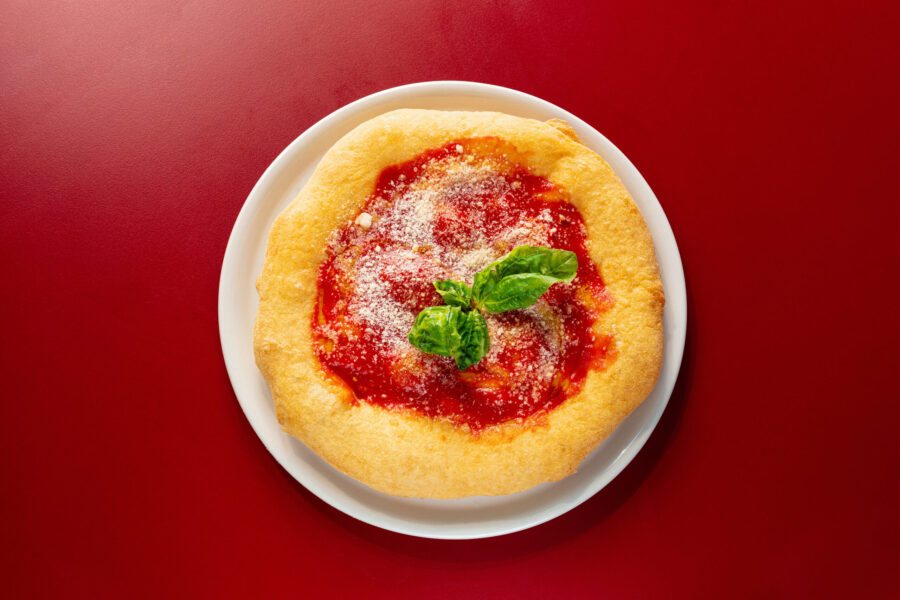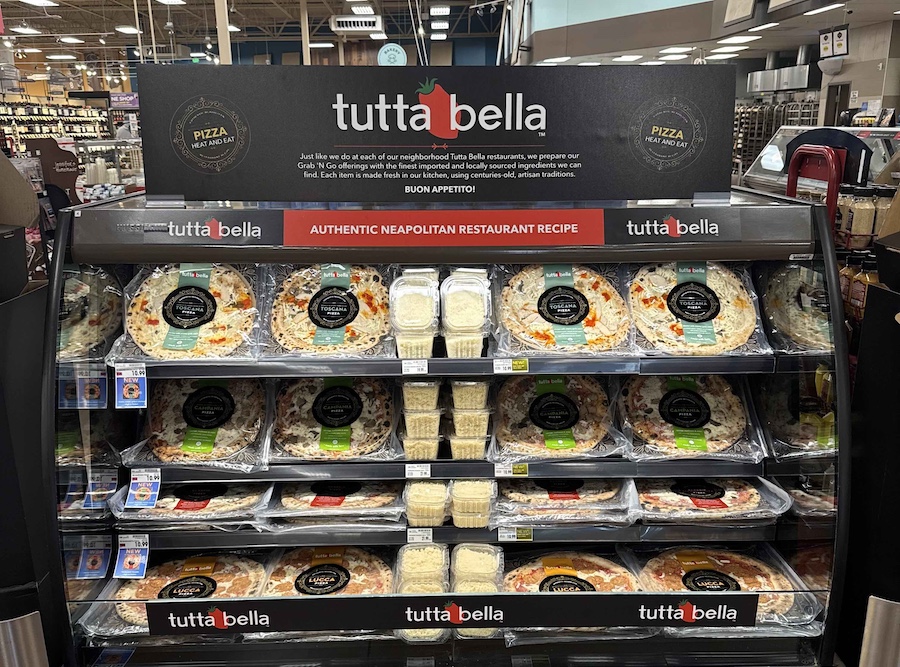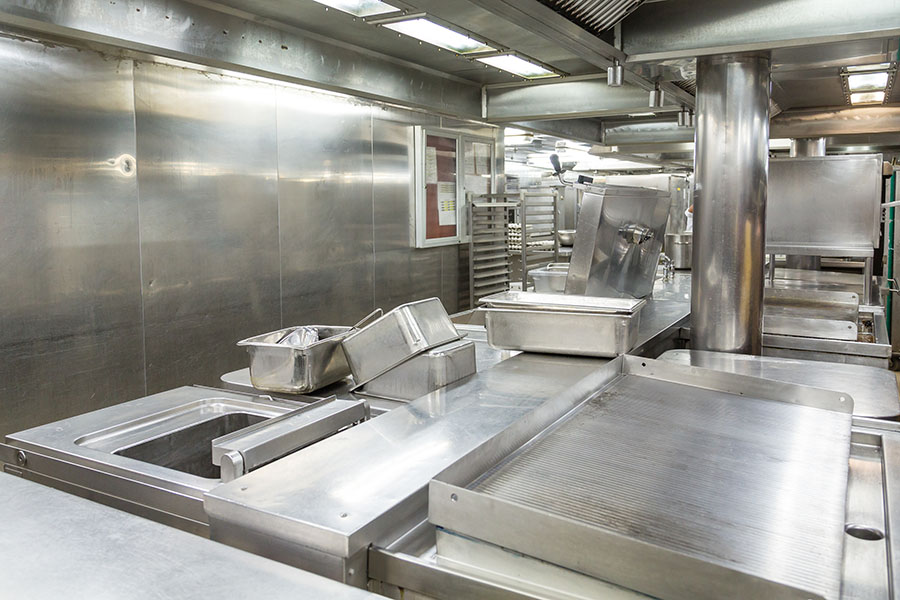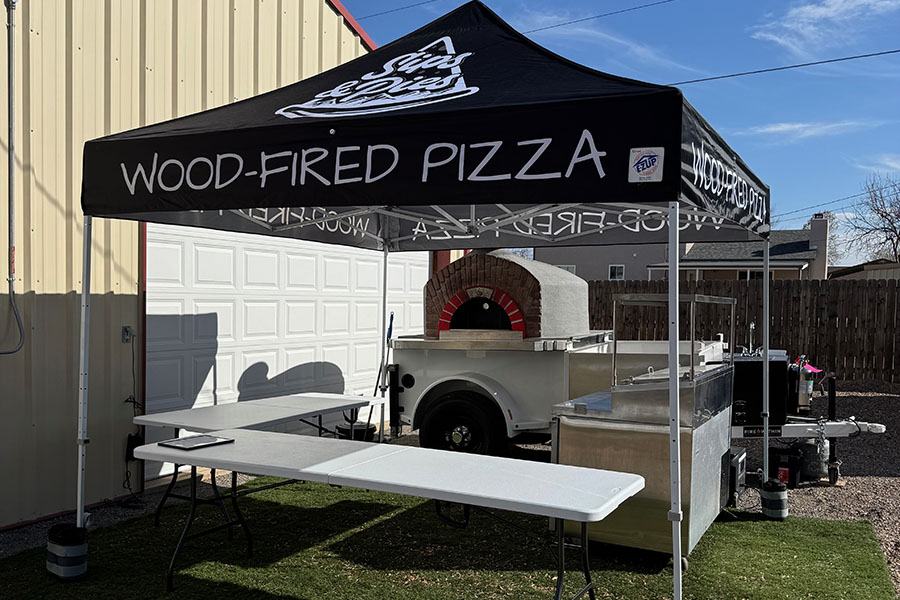Eggs on Pizza
Egg takes rightful spot on the pizza menu

Last month, through trial and error — we were able to successfully cook eggs directly on a pizza in the Pizza Today Test Kitchen. It was a feat and the challenge of it triggered a quest to find out more about eggs as a pizza topping.
The nutrient-dense protein is popping up on pizza menus across the country, from the small mom and pops to upscale artisan restaurants, and with good reason. In America, we love eggs. In fact, the U.S. consumption was estimated at 278.8 eggs per person in 2018, according to the American Egg Board. That’s a lot of eggs.
In pizza’s long history, egg as a topping is a relatively new choice. It turns out the origin has been challenging to track down. Around the world, egg on pizza is a mainstay ingredient rather than a delicacy. Let’s explore a few ways eggs are being used on pizza:
- “Zanzibar Pizza,” a street food filled with minced beef, onion and an egg is commonly served in Stone Town, Zanzibar, Tanzania.
- Portuguese Pizza is a popular pie in Brazil and features sliced hardboiled egg with ham, onion and olives.
- The Italian Pizza capricciosa has a beloved version with artichoke hearts, olive oil, olives, basil and finished with an egg.
- Poached egg has become a welcomed addition to Pizza Florentine with spinach, ricotta and mushrooms.
- Fried egg is a favorite pizza topping in France.
Americans’ acceptance of unique pizza toppings likely traces back to the introduction of the California-style pizza in the early 1980s. The idea of putting chicken, egg, avocado or goat cheese on a pizza became hip and hasn’t wavered.
There are dozens of ways to cook an egg. We’re going to focus three methods that can be duplicated in any pizza kitchen. They are:
 Scrambled as a base or topping. This may be the easiest way to introduce eggs onto your menu. Scrambled eggs can be precooked and placed on the makeline. In the Pizza Today Test Kitchen, we found if you scramble the eggs with ingredients like whole milk or ricotta, the eggs will have a wetter consistency to prevent overcooking them in the oven. There is nothing worse than rubbery, dry eggs on a pizza.
Scrambled as a base or topping. This may be the easiest way to introduce eggs onto your menu. Scrambled eggs can be precooked and placed on the makeline. In the Pizza Today Test Kitchen, we found if you scramble the eggs with ingredients like whole milk or ricotta, the eggs will have a wetter consistency to prevent overcooking them in the oven. There is nothing worse than rubbery, dry eggs on a pizza. - Cracked on a pizza while baking. This method requires testing, a lot of testing. In an instructional video series, Los Angeles chef Vito Iacopelli at Provami shared how to cook an egg on a pizza in a wood-fired dome oven. After stretching and topping the pizza, the egg is cracked directly onto the pizza. He placed the pizza closer to the mouth of the oven to cook slightly slower than other Neapolitan pies. In the test kitchen on a deck oven at 500 degrees, our method was different. The best result came from par-baking the pizza for three to four minutes then adding the cracked egg and cooking for an additional six to seven minutes until the white is set and yolk is still soft.
 Eggs applied post bake. This is the method that allows the most versatility in the ways you can prepare the egg. You can simply fry an egg over easy and place it atop a hot pizza and serve. Another approach is to poach the eggs and place on the pizza. Poaching was the preferred method in the Pizza Today Test Kitchen. It allowed us to control the outcome and have a vivid white with a bright yellow yolk. We opened the yolk with a knife to run on the pizza to give it a beautiful presentation. When poaching an egg, if the white separates when dropped into the boiling water, add a tablespoon or two of vinegar. If you are looking for a perfect egg with a runny yolk, you can use a mold during poaching or try the sous vide technique. It requires a water bath with an immersion circulator (temperature ranging from 145 F to 170 F) and time to bring eggs to desired doneness. Sous vide eggs provide a jaw-dropping presentation.
Eggs applied post bake. This is the method that allows the most versatility in the ways you can prepare the egg. You can simply fry an egg over easy and place it atop a hot pizza and serve. Another approach is to poach the eggs and place on the pizza. Poaching was the preferred method in the Pizza Today Test Kitchen. It allowed us to control the outcome and have a vivid white with a bright yellow yolk. We opened the yolk with a knife to run on the pizza to give it a beautiful presentation. When poaching an egg, if the white separates when dropped into the boiling water, add a tablespoon or two of vinegar. If you are looking for a perfect egg with a runny yolk, you can use a mold during poaching or try the sous vide technique. It requires a water bath with an immersion circulator (temperature ranging from 145 F to 170 F) and time to bring eggs to desired doneness. Sous vide eggs provide a jaw-dropping presentation.
I reached out to Peter Reinhart, chef and baking instructor at Johnson & Wales University and co-founder of PizzaQuest.com, about our egg pizza quest. The first time he says he encountered eggs on a pizza was about 15 years ago at Roberta’s in Brooklyn, New York.
We asked Reinhart for tips on the three methods. “None of these methods are very complicated,” he says. “Scrambled are easy because they can be added like any other topping ingredient, prior to the bake (the cheese and sauce protects it); cracked, uncooked eggs can usually go on at about the halfway point (though the timing
depends on the type of pizza and oven temp, but a few test bakes should determine the ideal moment of application); sous vide or prebaked eggs are already at the ideal stage so they need to go on top only for the final 30 to 60 seconds, so as to heat but not overcook the yolks. If you have the ability and wherewithal to sous vide the eggs then the final application on top of the pizza is the easy part.”
Reinhart offers a few more helpful tips for a perfect egg on pizza. “I like to gently pre-crack the egg into a cup or bowl so that it’s ready to apply without trying to crack the egg directly over the pizza,” he says. “It also minimizes the possibility of breaking the yolk. The key is to have a runny yolk but fully cooked white. Doming the pizza for a few seconds may be necessary depending, again, on the oven temp. If using scrambled eggs, you can also mix them with some savory sauce, like sriracha or harissa to enhance their flavor.”
Once you figure out how you are going to cook eggs, include egg as an add-on item to your protein list. Depending on your market, you may charge $2 to upwards of $5. If you go through the effort to source organic, free-range, local eggs from a nearby farm, let your customers know that. If egg as a pizza topping is new to your clientele, you may need to specify cooking method. If they are thinking scrambled and the pizza arrives with an egg sunny-side up, it may lead to pies being sent back to the kitchen.
With so many ways to prepare eggs and use across a menu, the egg is an ideal ingredient to test new methods in your kitchen.
Try two pizzas created in the Pizza Today Test kitchen:
Denise Greer is Executive Editor of Pizza Today.

 Scrambled as a base or topping. This may be the easiest way to introduce eggs onto your menu. Scrambled eggs can be precooked and placed on the makeline. In the Pizza Today Test Kitchen, we found if you scramble the eggs with ingredients like whole milk or ricotta, the eggs will have a wetter consistency to prevent overcooking them in the oven. There is nothing worse than rubbery, dry eggs on a pizza.
Scrambled as a base or topping. This may be the easiest way to introduce eggs onto your menu. Scrambled eggs can be precooked and placed on the makeline. In the Pizza Today Test Kitchen, we found if you scramble the eggs with ingredients like whole milk or ricotta, the eggs will have a wetter consistency to prevent overcooking them in the oven. There is nothing worse than rubbery, dry eggs on a pizza.  Eggs applied post bake. This is the method that allows the most versatility in the ways you can prepare the egg. You can simply fry an egg over easy and place it atop a hot pizza and serve. Another approach is to poach the eggs and place on the pizza. Poaching was the preferred method in the Pizza Today Test Kitchen. It allowed us to control the outcome and have a vivid white with a bright yellow yolk. We opened the yolk with a knife to run on the pizza to give it a beautiful presentation. When poaching an egg, if the white separates when dropped into the boiling water, add a tablespoon or two of vinegar. If you are looking for a perfect egg with a runny yolk, you can use a mold during poaching or try the sous vide technique. It requires a water bath with an immersion circulator (temperature ranging from 145 F to 170 F) and time to bring eggs to desired doneness. Sous vide eggs provide a jaw-dropping presentation.
Eggs applied post bake. This is the method that allows the most versatility in the ways you can prepare the egg. You can simply fry an egg over easy and place it atop a hot pizza and serve. Another approach is to poach the eggs and place on the pizza. Poaching was the preferred method in the Pizza Today Test Kitchen. It allowed us to control the outcome and have a vivid white with a bright yellow yolk. We opened the yolk with a knife to run on the pizza to give it a beautiful presentation. When poaching an egg, if the white separates when dropped into the boiling water, add a tablespoon or two of vinegar. If you are looking for a perfect egg with a runny yolk, you can use a mold during poaching or try the sous vide technique. It requires a water bath with an immersion circulator (temperature ranging from 145 F to 170 F) and time to bring eggs to desired doneness. Sous vide eggs provide a jaw-dropping presentation.





